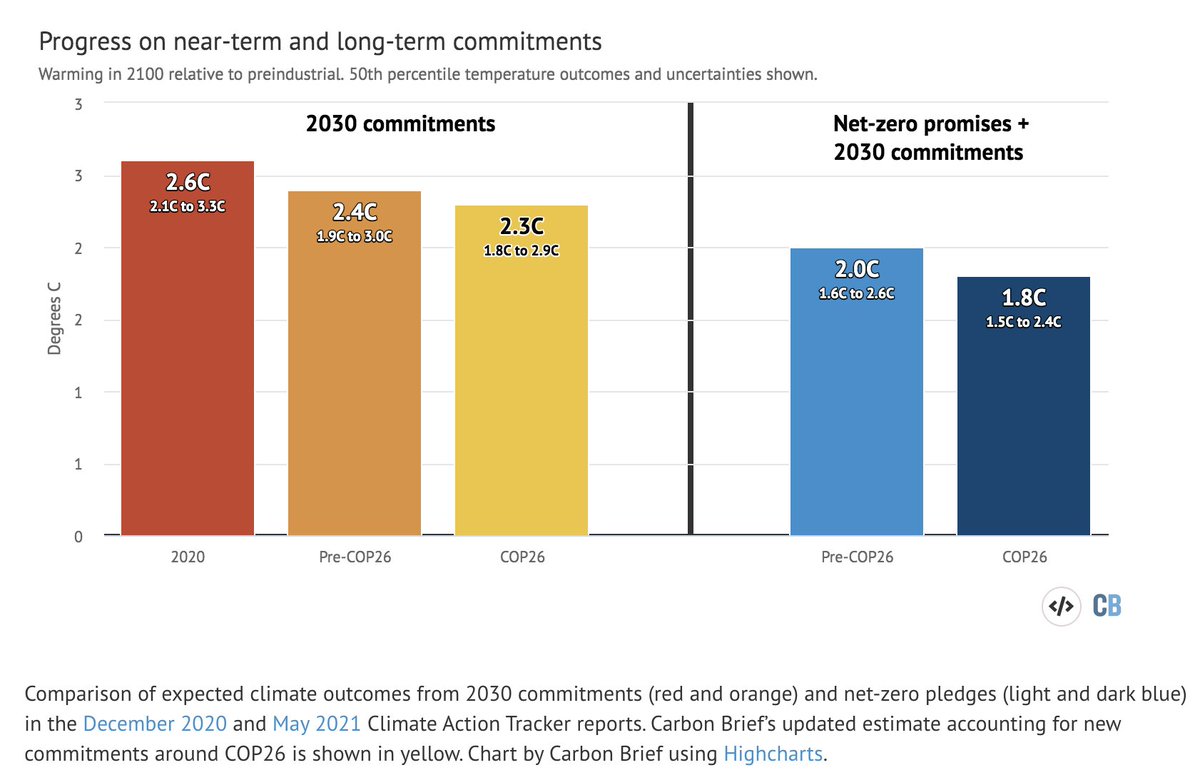
This is thankfully not true. As we reported in the recent IPCC 6th Assessment Report, scenarios that limit us to around 1.8C (with a 66% chance of avoiding 2C) require getting to net-zero emissions by around 2070, not 2030 as this tweet and article inaccurately imply.
https://twitter.com/xr_cambridge/status/1464881686018236418
Climate change is a big enough problem to solve that we really don't need disempowering hyperbole like this. Yes, the window to limit warming to 1.5C is rapidly closing, but at the same time below 2C is increasingly within reach.
For reference, here is the SSP1-2.6 scenario that limits warming to ~1.8C by 2100. If you were to exclude the net-negative portion of emissions you would end up closer to 2C by 2100 (or would have to get to net-zero closer to 2060). Either way its a far cry from 2030! 

And here is what we are on track for today, and where we would end up under the various pledges made by countries coming out of COP26: carbonbrief.org/analysis-do-co… 

• • •
Missing some Tweet in this thread? You can try to
force a refresh












